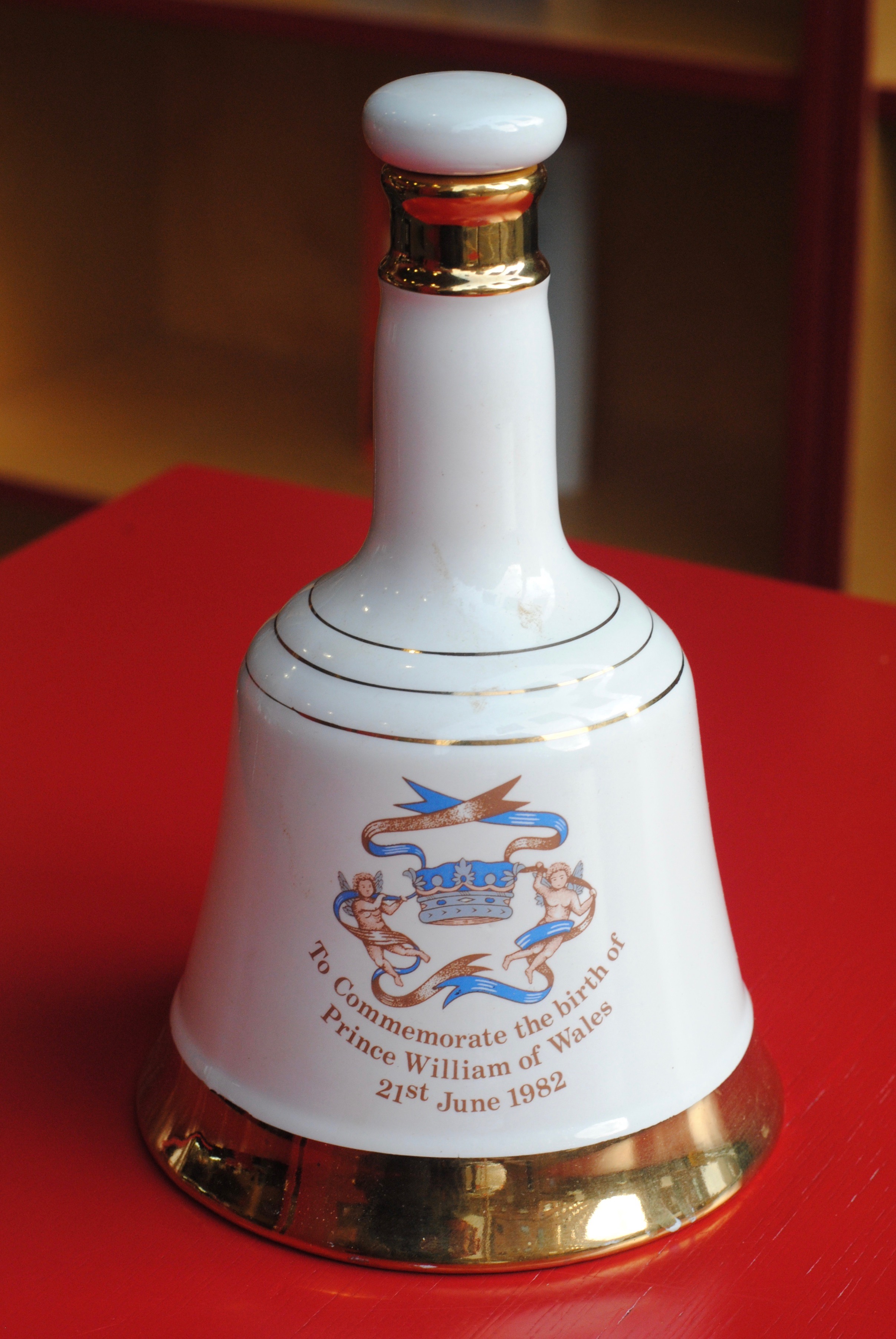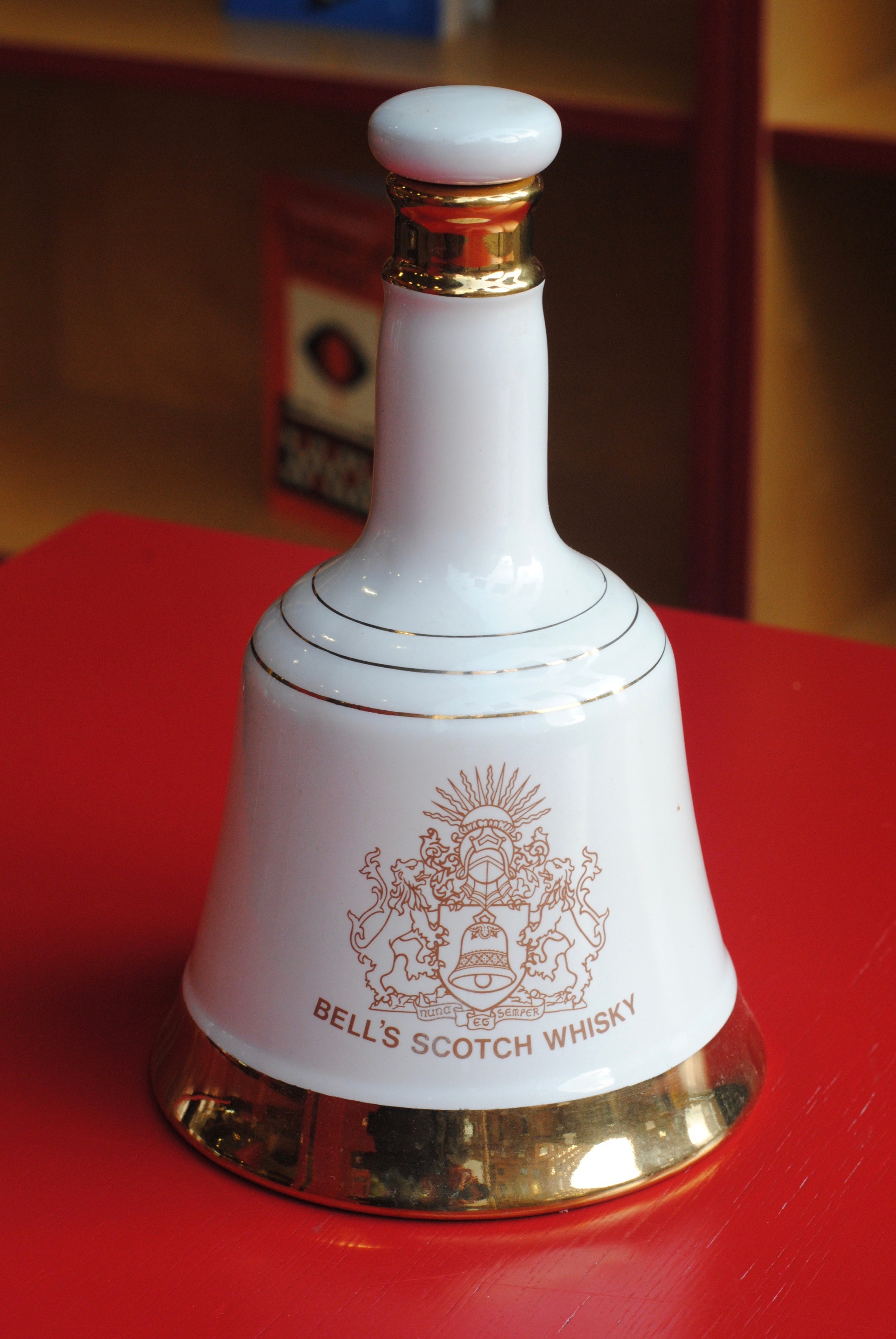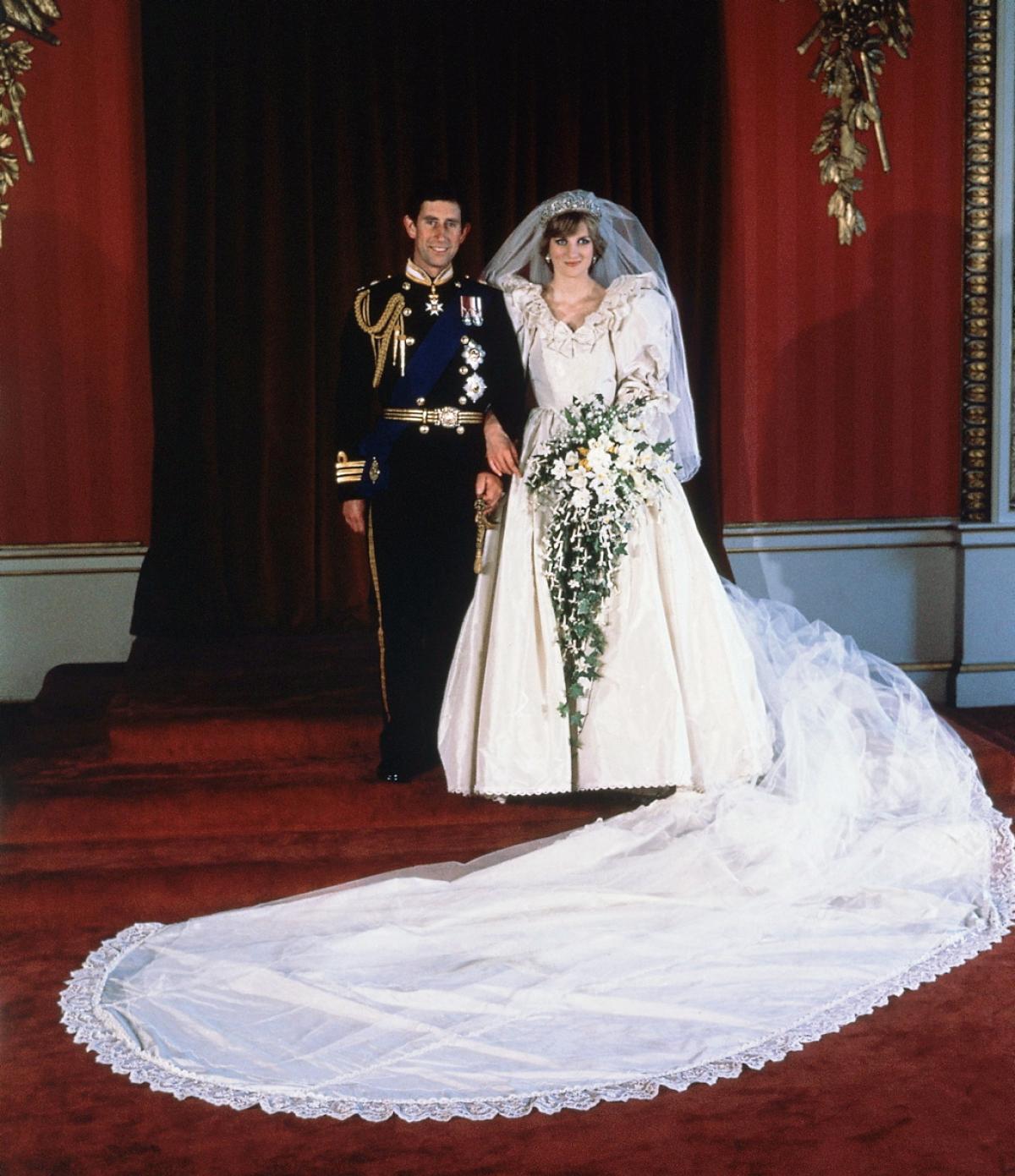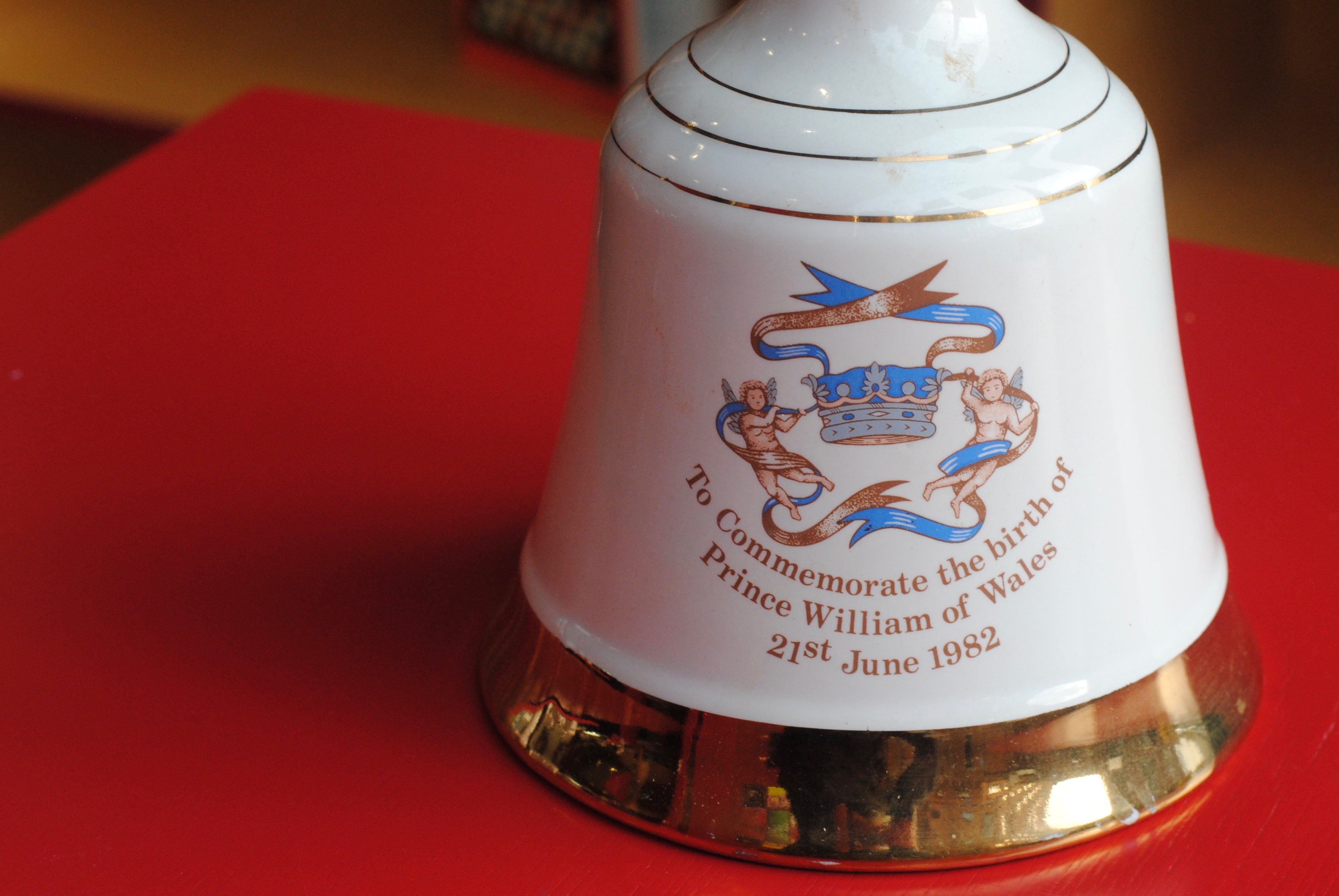Object of the Week: A Royal Whisky Decanter
-
Will Carr
- 8th November 2017
-
category
- Object of the Week

This ceramic whisky decanter was produced by Bell’s in 1982 to mark the birth of Prince William, and was part of a series made by the company to commemorate royal occasions. Now considered desirable collector’s items, these decanters contained some of Bell’s finest whisky blends. The sticker on the box indicates that it was purchased in duty free in England, and it is likely that Anthony and Liana Burgess bought it on their way back to their home in Monaco. No whisky remains inside, possibly having evaporated.

Burgess’s apparent enthusiasm for royalty appears at other unexpected moments. A family tree that he drew for the benefit of his son asserts that his great-great-great-grandfather was the illegitimate son, ‘begotten in Manchester’ of Prince Charles Edward Stuart (Bonnie Prince Charlie), who passed through Manchester in 1745. There is no evidence that Burgess’s family had any connection to the Young Pretender, but it suited Burgess to speculate about his royal Catholic origins. A longer statement about the royal family in relation to Burgess’s family and religious heritage is in the article ‘Why We Love This Family Of Usurpers’, first published in Paris Match and republished on our website here: https://www.anthonyburgess.org/blog-posts/why-we-love-this-family-of-usurpers-anthony-burgess-on-the-royals/
The 1964 novella The Eve Of Saint Venus – a light-hearted comedy about love and marriage first written as a verse play in 1952, and reimagined later in prose – was reissued in 1981, the year of the wedding of the Prince of Wales to Lady Diana Spencer. For this reissue Burgess wrote a new preface, offering the work as ‘a loyal tribute’ to the Prince and Princess and expressing his own strong belief in the institution of marriage. He also wrote a piece titled ‘Royal Wedding’ for an American television guide, anticipating the unprecedented global coverage of the marriage ceremony in July of that year:

‘This is going to be a magnificent wedding […] It will be exciting because it lacks political purpose – it will not be a specially rigged piece of showbiz designed to reconcile the people to a party or a regime. It will celebrate one of the fundamental functions of human beings – the consummation of love and the hope of a posterity. Because it is the marriage of rather special people, it will seem somehow to glorify the institution of marriage, proclaim the worth of the sacrament, make our own marriages take on new lustre […] It will be a shot in the arm to see gold and scarlet and purple again, and to hear the silver trumpets.’

This is presented somewhat free of irony, and might even appear naïve; but Burgess’s eager anticipation of the large-scale celebrations of the ‘Wedding of the Century’ seems unfeigned, and might be compared with his description of the Rag Day student carnivals in Manchester in the 1930s – ‘the happiest days of our lives’, one of only two occasions in his memoirs where he admits to feelings of uncomplicated joy.
Whether the Windsors ever read Burgess’s novella is not known, but things did not of course turn out completely happily for them. The couple separated in 1992, and Burgess marked the occasion in an unpublished article called ‘Royal Break-Up’. Describing himself as ‘a British Monarchist’, he worries about the constitutional implications of a royal divorce (which eventually took place in 1996), but more fundamentally about the challenge that the ending of this marriage poses to other unions in the kingdom:
‘The entire marital situation as it affects the Royal Family fills many of us with foreboding. What must we think of the institution of Christian marriage in general? … It seems to me that one of the events we may expect in the near future is the dissolution of the established Church of England. If the British Royal Family cannot exemplify one of the basic tenets of that Church – namely, the sanctity of marriage – then the Monarchy must give up its right to religious leadership … The recent burning of Windsor Castle [which was badly damaged by a fire in November 1992] may be taken as a symbol of the instability of the monarchy.’
Burgess’s vision of a new counter-reformation of sorts is a fanciful one, as he himself recognises, and he concludes by remembering that the British monarchy is an unusually resilient and adaptable institution. However, even while ‘the British people need the monarchy, its collective heart breaks at the evidence of so many failed marriages’. Burgess’s ideal of marriage, his mainly harmonious twenty-five year marriage to his second wife Liana notwithstanding, is bound in a complicated way to his idealisation of the royal family.

Burgess’s only encounter with actual British royalty may have been at a garden party in Brunei in 1959:
‘Trouble arrived with the Duke of Edinburgh. Two New Zealand typists curtsied but Lynne [Wilson, Burgess’s first wife] looked grim. The Duke said, ‘Everything all right here? Everybody satisfied?’ The typists said ‘Oh yes, thank you sir.’ But Lynne said: ‘No, everything is not bloody well all right. The housing is inadequate, they promise decent schooling for the kids and provide nothing, and the whole administration is fucking inefficient.’ The Duke, used to the strong language of the navy, seemed to like this intrusion of truculence into the blandness.’
Burgess’s later exchanges with royalty were confined to his friendship with Princess Grace Kelly of Monaco, which was cut short by her death in a car accident in 1982. He was a founding trustee of the Princess Grace Irish Library, created in her memory by her widower, Prince Rainier III.



